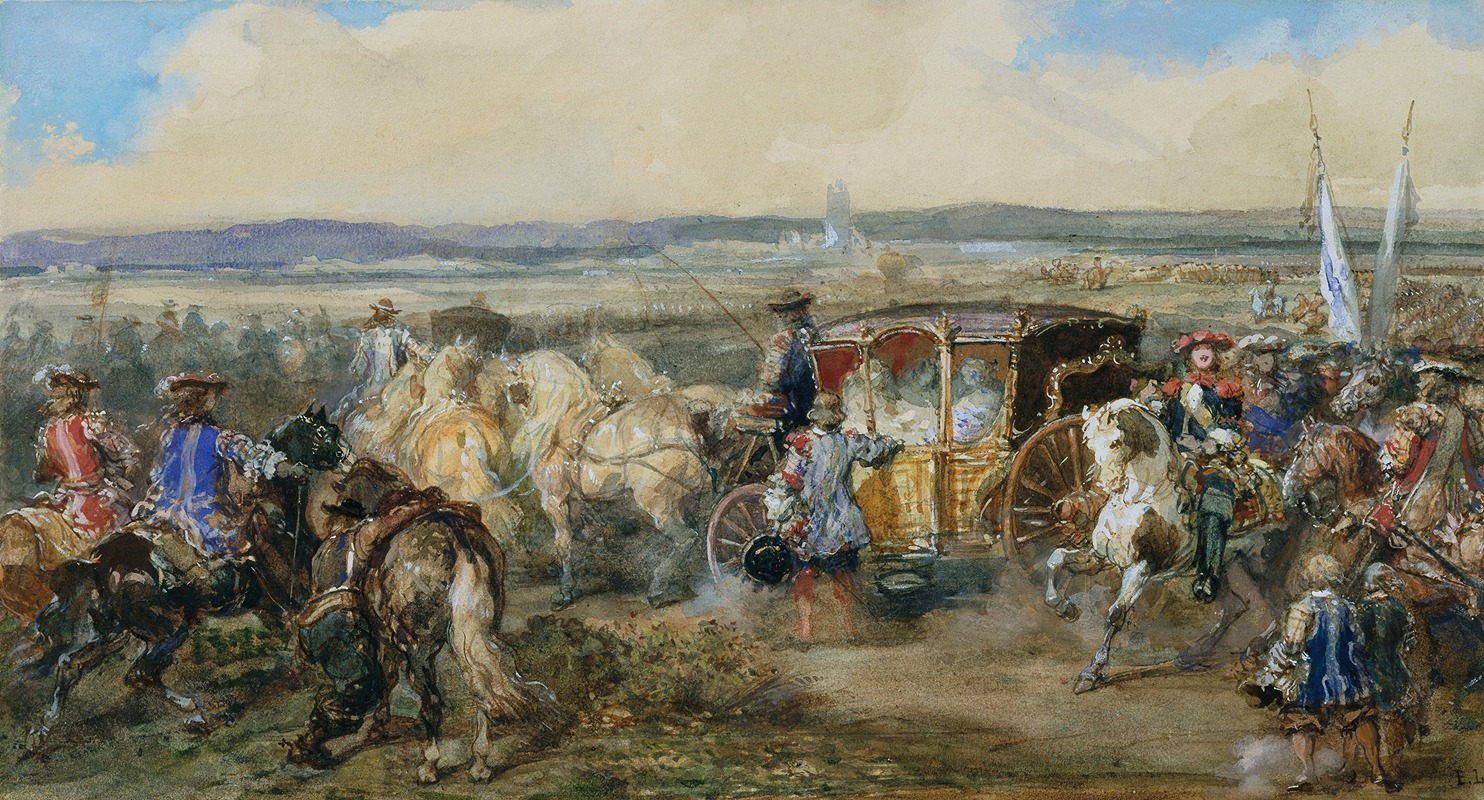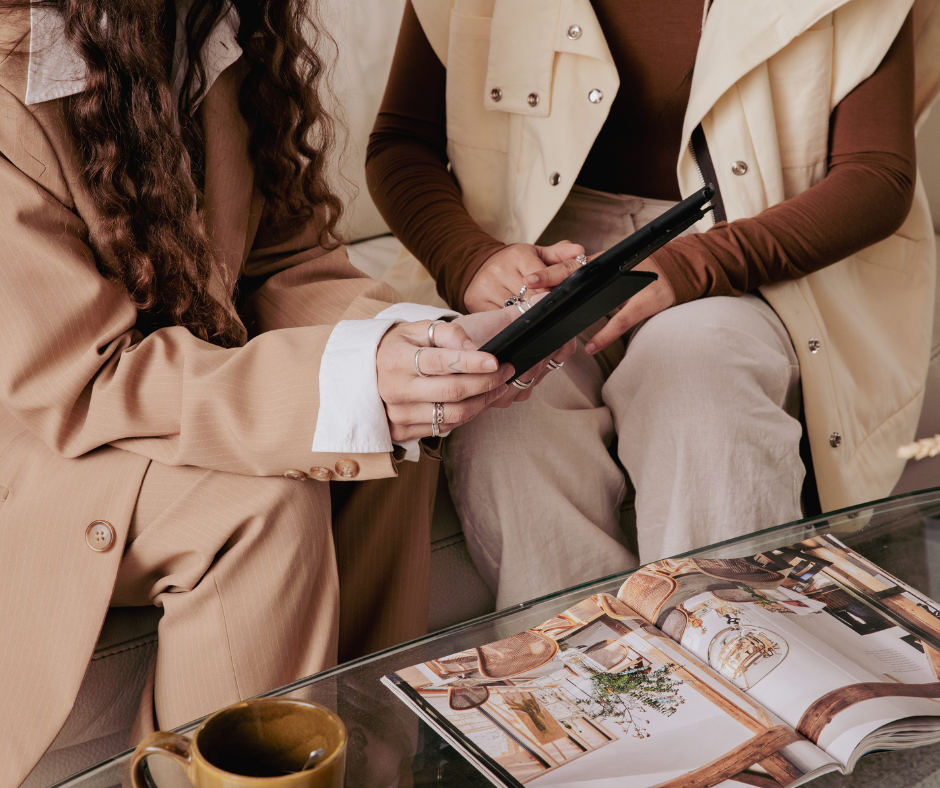

Social Graces: Is Etiquette Passé, or is Netiquette the New Thing?
Summary
Reflection Questions
Journal Prompt
In a world characterized by rapid technological advancements and cultural shifts, the age-old concept of etiquette finds itself at a crossroads. As we navigate the complexities of modern life, we naturally question the relevance of traditional social graces. After all, much of our “etiquette” is rooted in outdated gender roles and classist behavior. Has etiquette become a relic of the past, or is it providing a necessary framework for interactions in the digital age through the emergence of netiquettes? In this article, we explore the historical context of etiquette, its evolution, and the contemporary landscape where netiquette has become the new norm.
Understanding Etiquette
Etiquette is a system of rules governing social and professional behavior. Though you won’t find it written in modern legal codes, etiquette still regulates interactions. Unlike a formal trial, breaches of etiquette incur disapproval from a collective community. Highly stratified societies, regardless of material culture, inherently turn to etiquette for establishing and enforcing behavior expectations.
Exploring the History of Western Etiquette


Western etiquette has its roots in the medieval courts of Europe, where the codes of conduct were developed to maintain peace among knights and nobles. These codes evolved into a broader system of manners and social behavior that governed the elite society. The concept of chivalry, emerging in the Middle Ages, played a significant role in shaping the early forms of Western etiquette. Chivalry emphasized virtues like honor, respect, and courtesy, especially towards women. Courtly manners were initially confined to the aristocracy, but as time passed, these practices began to filter down through the social hierarchy.
By the Renaissance period, etiquette became more codified and widespread, with books and manuals being written to guide the public in proper behavior. One of the most influential of these was Baldassare Castiglione’s “The Book of the Courtier,” published in 1528, which outlined the ideal conduct for a courtier. The Victorian era marked another significant evolution in Western etiquette. During this time, a complex system of rules and manners emerged, influenced by the moral codes of the time and the growing middle class’s desire to emulate the aristocracy. Etiquette became a way to distinguish oneself socially and professionally, and it was during this period that many of the conventions we associate with Western etiquette today, such as table manners and the use of polite language, were solidified.
The Role of Etiquette in Historical Context


Etiquette, distinct from manners, originated among nobles in early modern France, and consciously developed as a set of written rules for social interactions in polite society. In the 17th century, King Louis XIV of France strategically used etiquette to solidify his political position and control the French nobility. Etiquette rules, printed on “étiquettes” or cards, dictated proper behavior during palace visits, including seating arrangements and dress codes. These rules impressed dignitaries visiting Versailles, spreading etiquette norms throughout Europe.
The 18th-century Age of Enlightenment witnessed a conscious adoption of etiquette to signify one’s status among the cultural elite. The bourgeoisie emulated upper-class behaviors to identify with this social stratum. In America, George Washington and Benjamin Franklin contributed to the establishment of rules of Civility, aiming to propagate etiquette in American society. By the 19th century, etiquette extended beyond adults to include guidelines for children’s behavior and covered various aspects of life, with some rules appearing absurd by modern standards.
Fuel your creative fire & be a part of a supportive community that values how you love to live.
subscribe to our newsletter
Victorian-era etiquette, flourishing in the 19th century, evolved into a complex system governing manners, language, and social interactions, reflecting societal values. Etiquette manuals guided individuals on proper conduct, from writing letters to using cutlery.
The 20th century saw Emily Post’s influential book Etiquette, In Society, In Business, In Politics, In Home, marking a shift toward a more modern and inclusive approach. In contemporary times, etiquette remains integral to cultures but has adopted a more relaxed attitude. Society’s evolving nature intertwines manners and etiquette, creating an unwritten set of social conventions.
Throughout history, etiquette has served political, societal, and cultural purposes, influencing behavior, fostering social cohesion, and reflecting the values of the times. Its evolution continues to shape how individuals navigate social and professional landscapes.
Shifts in Modern Society


The rapid shifts in modern society, catalyzed by the digital revolution, globalization, and cultural transformations, have profoundly impacted the perception and practice of etiquette. The advent of the internet and digital communication has redefined how individuals interact, blurring the lines between traditional and contemporary manners.
Social media is a powerful agent of change. It has significantly altered the landscape of etiquette. Social media sites like Facebook, Twitter, and Instagram have introduced new norms and expectations for online behavior. The immediacy and informality of digital communication have challenged conventional etiquette, fostering a culture where brevity often trumps formality. The traditional rules of engagement in face-to-face interactions have adapted to accommodate the rapid pace and wide reach of online communication.
Globalization has brought diverse cultures into closer contact, necessitating a more nuanced understanding of etiquette across borders. Cultural sensitivity has become a crucial aspect of modern etiquette as individuals navigate an interconnected world, respecting diverse norms and customs.
Moreover, the digital revolution has reshaped professional online etiquette, influencing online communication in business environments. The rise of remote work and virtual meetings has blurred the boundaries between personal and professional life, requiring a reevaluation of traditional workplace etiquette.
Current State of Etiquette


Over the last two decades, etiquette has undergone substantial transformations in response to societal shifts, technological advancements, and evolving cultural norms in the online world. Research and surveys indicate a changing landscape of attitudes towards etiquette, reflecting a dynamic relationship between tradition and contemporary expectations.
As mentioned above, digital devices have played a pivotal role in reshaping etiquette, rendering some practices obsolete and introducing new norms. With the decline of fax machines, landlines, and beepers, the digital revolution has necessitated etiquette guidelines for virtual meetings and pandemic-related conversations. The fluidity of technology, marked by emerging devices and modes of communication, ensures that etiquette in this domain remains an ever-evolving area.
For example, in online classrooms, private messages, chat rooms, real life scenarios, social media posts, cell phone calls and messages, phone conversations, and all other forms of virtual communication must have good netiquette. It is essential for internet users, social media platform members, online information sharers, and people indulged in flame wars to follow netiquette guidelines. They should avoid adopting poor netiquette, spreading inaccurate information, fraudulently doing identity theft, sharing private information of other users, involvement in hate speech, replicating other’s security questions and all other forms of bad netiquette.
Attire standards have experienced major changes, too, moving away from the formality of two decades ago. While office attire was once more formal with nylons and business suits, today’s workplaces embrace a more relaxed dress code. Honorifics and gender-related etiquette have also evolved. The introduction of the gender-neutral title “Mx” reflects a growing awareness of diverse gender identities. Pronouns and gender sensitivity have become integral components of modern etiquette, emphasizing the importance of respecting individuals’ chosen identities.
In addressing married women, a departure from the outdated practice of using their husband’s first and last names signifies a move toward greater gender equality. Etiquette now encourages the use of preferred honorifics before an individual’s first and last name, allowing for more inclusive and respectful forms of address.
Netiquette: Etiquette in the Digital Age


Netiquette, a portmanteau of “net” and “etiquette” is a vital aspect of digital communication, emphasizing the importance of courteous and respectful behavior online. In an era dominated by the Internet, email, and various digital platforms, the emergence of netiquette or online etiquette has become essential for fostering positive interactions and navigating the complexities of the digital age.
Technology has not only facilitated unprecedented connectivity but has also introduced new challenges and opportunities in the realm of etiquette. The “Core Rules of Netiquette,” adapted from Virginia Shea’s guidance, outline key principles for online behavior. These rules underscore the need to remember the human behind the screen, adhere to ethical standards applicable in real life, and recognize the diversity of online environments, each requiring distinct behavior.
Maintaining respect for others’ time and bandwidth is crucial, emphasizing brevity and relevance in digital communication. Making oneself look good online extends beyond appearances, encouraging users to uphold standards of grammar, spelling, and content that contribute positively to their digital identity.
Sharing expert knowledge and fostering constructive discussions align with the positive aspects of the Internet-promoting the dissemination of accurate information. Furthermore, respecting privacy, refraining from abusing power, and being forgiving of others’ mistakes constitute foundational principles of netiquette.
In the digital age, where online interactions are integral to daily life, practicing netiquette is paramount. Users are urged not to say online what they wouldn’t say in person, to avoid spamming, and to share meaningful content while being mindful of oversharing.
Different online platforms provide different etiquette rules, ranging from brevity on Twitter to more extended posts on Facebook. Practicing netiquette contributes to a positive online experience, fostering a community that values respectful and considerate communication.
The Argument for Etiquette


Etiquette remains a timeless and essential aspect of social interaction, serving as the foundation for effective communication, fostering respect, and contributing to overall social harmony, but we can certainly do without the classist and sexist undertones of traditional etiquette. Let’s take a closer look at the positive impacts etiquette can have on society.
Effective Communication
Proper netiquette or online etiquette serves as a cornerstone for effective communication especially communicating online, providing a common framework that transcends cultural and individual differences. When individuals adhere to established norms of politeness, communication becomes clearer, minimizing the potential for misunderstandings and conflicts.
Fostering Respect
One of the primary advantages of etiquette lies in its role as a catalyst for same respect. By promoting courteous behavior and consideration for others, etiquette creates an environment where individuals feel valued and acknowledged. Respecting personal boundaries, opinions, and time contributes to a harmonious social atmosphere.
Building Social Harmony
Etiquette plays a pivotal role in the creation and maintenance of social harmony. It acts as a societal lubricant, smoothing interactions between individuals and fostering a sense of unity. In a diverse and interconnected world, etiquette becomes instrumental in building bridges between people from varied backgrounds.
Professional Success


The practice of etiquette is closely tied to professional success. Individuals who exhibit refined manners, punctuality, and effective communication skills often stand out in the workplace. Etiquette contributes to a positive professional image, impacting career advancement and the development of successful interpersonal relationships.
Cultural Sensitivity
Etiquette encourages cultural sensitivity by providing guidelines on appropriate behavior in different settings. Understanding and respecting cultural nuances become crucial components of etiquette, contributing to global interconnectedness and fostering inclusive communities.
Personal Growth and Confidence
Embracing etiquette not only enhances external interactions but also nurtures personal growth and confidence. Knowing how to navigate social situations with grace and consideration builds self-assurance, empowering individuals to navigate diverse environments with ease.
A Closer Look at the Role of Etiquette in Society
Promoting Civility
Etiquette acts as a fundamental tool for promoting Civility in society. It sets the standard for how individuals should interact, fostering an atmosphere of politeness and consideration.
Cultural Bridge
As a cultural bridge, etiquette facilitates communication between individuals from different cultural backgrounds, allowing for a more harmonious coexistence in an increasingly globalized world.
Conflict Resolution


The principles of etiquette provide a structured approach to conflict resolution. By emphasizing respectful communication and understanding, etiquette becomes instrumental in resolving disputes and preventing escalation.
Personal and Professional Integrity
Etiquette is integral to personal and professional integrity. It guides individuals to uphold ethical standards, promoting honesty, integrity, and accountability in their interactions.
Community Well-being
In the broader context, etiquette contributes to the overall well-being of the community. By fostering a culture of respect and consideration, etiquette becomes a driving force behind the creation of supportive and thriving communities.
Counterarguments in Our Modern Age
In scrutinizing the relevance of traditional etiquette, dissenting voices emerge, questioning its necessity in contemporary society. Critics argue that specific facets of traditional etiquette appear antiquated and impractical, contending that these norms can be perceived as overly restrictive and out of sync with the dynamics of modern life. By looking into these counterarguments, we uncover reservations about the adaptability and inclusivity of traditional etiquettes in our ever-evolving social landscape.
Perceived Irrelevance
Traditional etiquette, with its emphasis on formalities, can be viewed as out of touch with the informal and diverse nature of contemporary interactions. Critics argue that practices such as addressing people with specific titles and following rigid protocols might seem disconnected from the realities of modern-casual social dynamics. The fast-paced nature of today’s society may render certain traditional etiquettes cumbersome, making them appear irrelevant.
Restrictiveness


Critics contend that traditional etiquette is excessively restrictive, imposing a set of rules that may limit individual expression and authenticity. The insistence on strict adherence to certain norms may hinder genuine communication, creating barriers rather than facilitating connections. In a world that increasingly values authenticity and flexibility, the rigidity of traditional etiquette may be seen as an impediment to building meaningful relationships.
Cultural Variations
Traditional etiquette often reflects specific cultural norms, potentially excluding or marginalizing individuals from diverse backgrounds. Critics argue that adhering strictly to traditional etiquette can perpetuate an ethnocentric perspective, where certain cultural practices are privileged over others. In a multicultural society, this can lead to exclusionary behaviors and misunderstandings, undermining the principles of diversity and inclusivity.
Gender Stereotypes
Some traditional etiquettes are rooted in outdated gender norms, prescribing specific behaviors based on gender. For instance, the expectation that women should be addressed differently than men may perpetuate gender inequalities. Critics argue that these gender-specific etiquettes reinforce stereotypes and hinder progress toward gender equality, particularly in professional and social settings.
Generational Divide
The gap between generations in their acceptance of traditional etiquette is widening. Younger generations often perceive certain etiquettes as relics of the past, incompatible with their more relaxed and egalitarian approach to social interactions. This generational divide can lead to friction in communication and social settings, as different age groups navigate contrasting expectations regarding appropriate behavior.
Technological Shifts
The advent of digital communication and virtual interactions has fundamentally transformed the dynamics of social engagement. Traditional etiquette developed for face-to-face interactions may not seamlessly translate into online spaces. The absence of non-verbal cues and the asynchronous nature of digital communication can complicate the application of traditional etiquette, leading to misunderstandings and misinterpretations.
Acknowledging these counterarguments encourages a nuanced perspective, prompting a reevaluation of traditional etiquettes in the context of a rapidly evolving and diverse society.
Finding a Balance


Achieving equilibrium between time-honored etiquettes and the demands of contemporary lifestyles requires a nuanced approach. Rather than dismissing tradition outright, one can explore a middle ground that accommodates the essence of established norms while acknowledging the evolving nature of societal values.
This entails a careful examination of which etiquette and internet etiquette remain relevant and contribute positively to interpersonal dynamics. Embracing a mindset of evolving etiquette into netiquette allows for a dynamic adjustment that aligns with the ethos of today’s society, fostering a respectful and inclusive environment where tradition and modernity coexist harmoniously.
Here’s how you might approach striking a balance between traditional etiquette, netiquette, and modern values.
Critical Evaluation: Assess traditional etiquettes critically, identifying those that align with contemporary values and those that may need adaptation.
Cultural Sensitivity: Recognize and respect cultural differences, integrating etiquettes that promote inclusivity and understanding.
Open Dialogue: Encourage open conversations about etiquettes within communities, workplaces, or social groups, fostering collective decision-making on what practices are relevant.
Flexibility: Embrace flexibility by adapting etiquettes to suit various contexts, acknowledging that one size does not fit all in today’s diverse society.
Education and Awareness: Promote education on both traditional etiquette and modern values, fostering an understanding of their respective merits and contexts.
Personalization: Allow individuals the freedom to personalize their approach to etiquette, considering their values, beliefs, and the specific situations they encounter.
Technology Integration: Recognize the role of technology and digital communication, adapting internet etiquettes to the virtual sector while preserving the essence of respect and consideration.
Generational Collaboration: Facilitate intergenerational discussions to bridge gaps in understanding, and learning from the experiences and perspectives of different age groups.
Final Thoughts on the Value and Evolution of Etiquette


While some aspects face valid criticisms, etiquette’s role in fostering effective communication, respect, and social cohesion remains vital. Whether you are in an online classroom, face to face in a virtual meeting, part of a social network, making an important call, present in a public space, sending a private email, or speaking with someone in person, good online etiquette is very important.
One should not invade other people’s privacy, mock another user’s screen name, behave rudely, show negative facial expressions, include misspelled words, or use offensive body language on the internet. Adopt a respectful tone no matter whether you are in an online class or an in-person meeting. Follow the golden rule: treat others as you wish to be treated. Share your thoughts, ideas, and experiences with netiquette below.
By Anila Hasnain.








